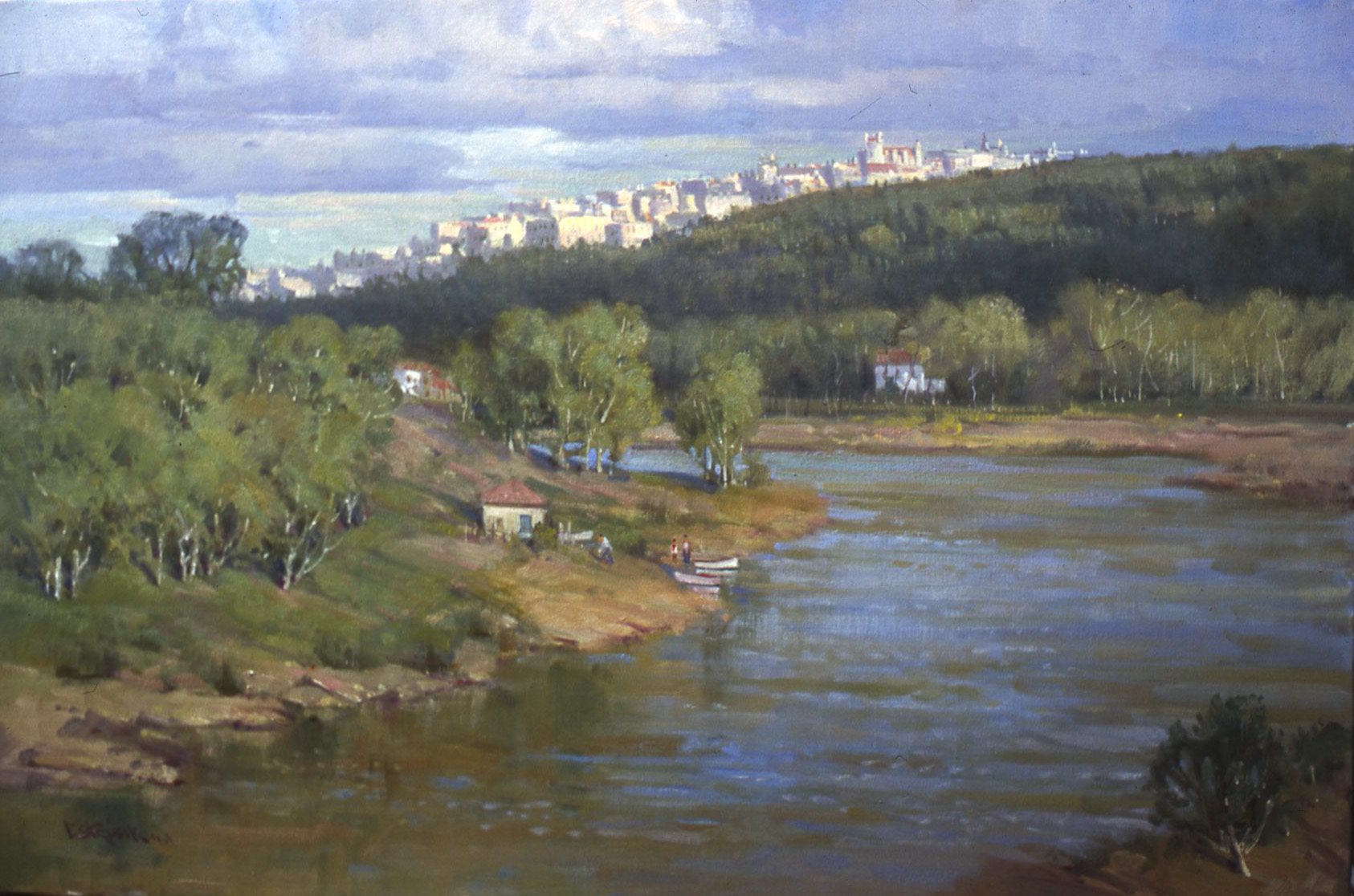Paul Strisik
Paul Strisik, N.A. (1918-1998)
“God’s light on a single blade of grass is
such a miracle and so difficult to capture with paint,
it is worth a lifetime of trying.”







“When you discover a part of nature and give it a sense of composition and poetry, it becomes your image, filtered through your own personal psyche.”








“Paint is a language. I love to use the language. I just try to talk in paint and share my emotional involvement and delight…”









“There has to be an intense love for the profession and a determination. There are miles of canvas behind every painting…”








A nationally acclaimed painter of truth and spiritual beauty, Paul Strisik arrived in the art scene of Rockport, Massachusetts in 1953, and opened his gallery at 10 Main Street next door to the Rockport Art Association in 1955. This season marks the closing of the Paul Strisik Gallery that has stood as a landmark of inspiration for decades for generations of both accomplished and aspiring painters. Strisik, who died in 1998 freely shared his enthusiasm and talents and was considered the “Dean of Local Artists” because of his generosity of knowledge and ‘the wiseness of his counsel.’ Known primarily for his outdoor studies in both oil and watercolor that carried him back into his studio, Strisik conjured the feeling, light, and mood of the landscape. Charles Movalli, artist and long-time friend, recently wrote in his article for American Art Review, September 2014, “For Strisik, it was impossible to invent a convincing picture in the studio because ‘nature touches all our senses and keeps us humble. Some of the happiest moments in my life have been spent outdoors painting on the spot.’” Strisik enjoyed working on still life subjects as a change of pace from plein air painting. He believed, “While quite different in essence, the principles of painting remain the same;” his still lifes painted with a sense of unity, an ensemble as an effect of light.
Strisik, born in 1918 in Brooklyn, New York considered himself a “late bloomer”, initially owning and operating The Hall Fish and Line Co. in upstate, N.Y., before enlisting in the Navy during WW2 as an aerial photographer where his trips to Casablanca and Rabat nurtured his desire to travel and seek out beauty and new scenery. He worked briefly for Life Magazine where some of his photographs were published.
Strisik studied with Frank Vincent DuMond at the Art Students League in NYC in the late 40’s and said, “…knew this was the man who could teach me to paint the way I wanted, what I admired most in those museums as a kid. He did not teach you painting per se. If anything, he taught there are no answers, but there is a way to find the answers you are looking for. He put you in a position to find the answers for yourself.” Strisik realized it was a philosophy for life, as well as for painting.
Strisik was a member of some of the most prestigious art organizations in America including full Academician in the National Academy of Design (N.A.), American Watercolor Society, Hudson Valley Art Association, Guild of Boston Artists, The Copley Society of Boston, Rockport Art Association, International Society of Marine Painters and many others. His concepts and technical skills are included in his books: The Art of Landscape Painting (1980), Capturing Light in Oils (1995), and The Life and Art of Paul Strisik (2001), and in a DVD, The Artist and His Work, Painting on Location (2001). Awarded over 185 awards, Strisik also received 18 Gold Metals for his excellence. His paintings are displayed in numerous museums and collections in the United States, Canada, and Europe including Cape Ann Historical Museum, Peabody-Essex Museum, Percy H. Whitney Museum, Albuquerque Museum, Harwood Museum, National Academy of Design, The Linen Thread Co., and Utah State University. Up until his death, Strisik divided his time between Rockport and Santa Fe.
God the Thinner
for P.S.
Understand, of course, the closer he moves to god the thinner.
The atmosphere.
Skin thin as the noon atmosphere on a clear day.
God waits.
For 12:01 pm then strikes the separation between
the dying and the living.
Loosens the flesh from a bone.
– Catherine Strisik
Go back to Top Menu
Go back to Top Menu
